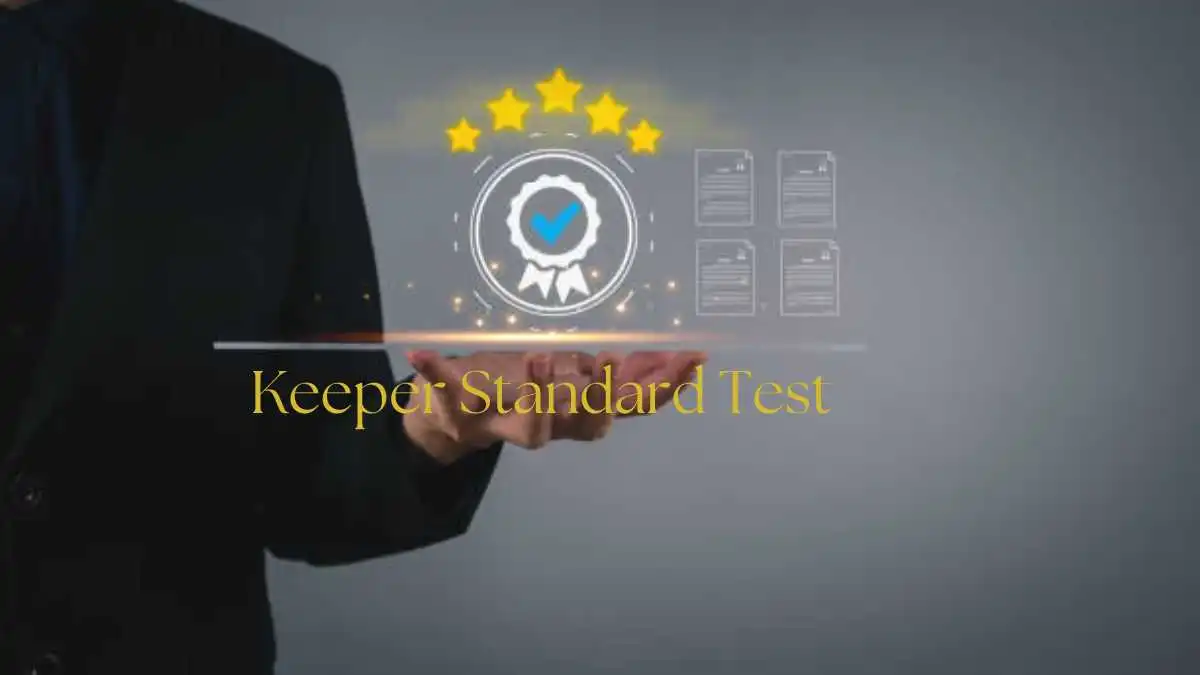GENERAL
Keeper Standard Test: Netflix’s Method for Retaining Top Talent

Keeper Standard Test is a talent management approach that evaluates employees based on their value to the company and future potential. It encourages leaders to critically evaluate each team member’s performance, focusing on high performers. This method fosters a culture of excellence, encouraging employees to recognize their contributions and create an environment for growth and innovation. The Keeper Standard Test is not just about retention but also aligns with Netflix’s standards of creativity and productivity, driving individual success and organizational achievement.
Table of Contents
The Birth of the Keeper Standard Test at Netflix
Netflix’s Keeper Standard Test was developed to foster a high-performance culture and retain top talent. The test shifted focus from tenure to impact, ensuring only those who truly contributed remained on board. This approach reinforced accountability within teams and created a sense of urgency around talent management at all levels. Netflix recognized the importance of retaining exceptional employees for innovation and growth, and traditional performance reviews were not enough.
How the Keeper Standard Test Operates
The Keeper Standard Test is thus a method applied by managers to rate their subordinates in view of their capability of keeping them. This is not only about the KPIs and project results, it also focuses on the employee productivity and compliance to the company’s culture. The test promotes the flow of ideas on how to keep the talented employees and create a strong and versatile team for coping with the arising issues.

Goals of the Keeper Standard Test
- Prioritize Top Performers: Ensure that only the highest-performing employees are retained to foster a culture of excellence.
- Increase Accountability: Emphasize personal responsibility and encourage employees to consistently deliver top results.
- Enhance Talent Retention: Focus on retaining valuable employees who contribute significantly to the company’s success.
- Strengthen Organizational Culture: Build a culture of high performance, innovation, and dedication.
- Improve Managerial Decision-Making: Enable managers to make informed decisions about their team members based on performance and potential.
- Maintain Competitive Edge: Help the organization stay competitive by retaining and nurturing top talent.
Impact on Company Culture
The Keeper Standard Test in the company culture of Netflix has brought changes in the company that is meritocratic, transparency in the company, accountability, and the way of feeling that the high performers are part of a big family. They make it possible for an organization to enable more engagements on performance issues, due to their liberal nature. It also tends to ensure standardization of performance and hence higher standards across the organizations’ hierarchy. This shift is beneficial as it helps attract the best staff members within any organization since those professionals have standard high performance places a lot of emphasis on constant improvement.
Benefits of the Keeper Standard Test
- Focus on Top Talent: Ensures that only the highest-performing employees are retained, boosting overall team quality.
- Enhanced Productivity: Encourages a high-performance culture, driving employees to exceed expectations and deliver exceptional results.
- Streamlined Decision-Making: Provides a clear framework for managers to assess employee value and make informed retention decisions.
- Competitive Advantage: Strengthens the organization’s ability to retain top talent, maintaining a competitive edge in the industry.
- Cultural Alignment: Reinforces company values of excellence and accountability, fostering a cohesive, performance-driven workplace environment.
- Adaptability: Easily implemented across different organizations to refine talent management strategies.

Challenges and Criticisms
The Keeper Standard Test, aimed at enhancing talent retention, has faced criticism for potentially fostering a culture of fear, ambiguity in criteria, and undermining trust within teams. It also raises concerns about team dynamics, with pressure to perform potentially leading to unhealthy competition. Some employees may thrive under pressure, while others may struggle, potentially causing disengagement or burnout. Critics question whether this method aligns with long-term employee development or short-term business goals, highlighting the complexities of effective implementation.
Employee Reactions and Perspectives
The Keeper Standard Test is a controversial system that has sparked varied reactions from employees. Some find it beneficial, as it promotes transparency and rewards performance, while others find it daunting due to constant evaluation. However, candid conversations with managers about career progression encourage professional growth and accountability. Some employees express concerns about fairness in evaluations, while others view it as empowering, encouraging continuous improvement. The system’s views reflect broader workplace culture and personal ambition in a high-stakes environment.
The Role of Leadership in the Keeper Standard Test
Leadership is crucial in the Keeper Standard Test, assessing team members based on contributions and company values. They should facilitate open discussions about performance, encouraging honesty. Leadership sets the tone for talent retention and coaching, guiding less effective employees towards improvement or finding suitable roles. This proactive approach strengthens individual capabilities and enhances team dynamics, creating a culture of growth and innovation by investing time and resources into understanding each employee’s potential.
Measuring the Success of the Keeper Standard Test
The Keeper Standard Test’s success is measured by key metrics such as employee retention rates, engagement scores, performance evaluations, and recruitment quality. A decrease in turnover indicates the effectiveness of the approach, while increased commitment and recognition boost morale. Performance evaluations track individual performance before and after the test, while recruitment quality assesses the long-term impacts on talent acquisition.
Future Trends in Talent Retention and the Keeper Standard Test
The Keeper Standard Test, a talent retention tool, is expected to gain traction as companies adapt to remote work and digital environments. Data analytics will be crucial in refining the test, allowing businesses to gain deeper insights into their teams. Future iterations may incorporate emotional intelligence and cultural fit for a holistic view of an employee’s value. The test’s relevance and effectiveness may be shaped by integrating modern technology with human-centric values.
Conclusion
In conclusion, Netflix’s Keeper Standard Test is an innovative approach to retaining top talent and creating a strong company culture. By prioritizing performance and cultural fit over traditional markers of success, Netflix has been able to build a team of highly motivated and dedicated employees. This test serves as an example for other companies looking to improve employee retention and create a positive work environment.
-

 GENERAL6 months ago
GENERAL6 months agoChristofle – For Those Who Dream of Family Heirloom Silver
-

 SPORTS8 months ago
SPORTS8 months agoDiscover the World of Football with Streameast: Watch Your Favorite Leagues and Tournaments
-

 GENERAL5 months ago
GENERAL5 months agoUncovering the World of кинокрадко: The Dark Side of Film Piracy
-

 GENERAL3 months ago
GENERAL3 months agoATFBooru: Anime, Gaming, and Subculture Imageboard


























